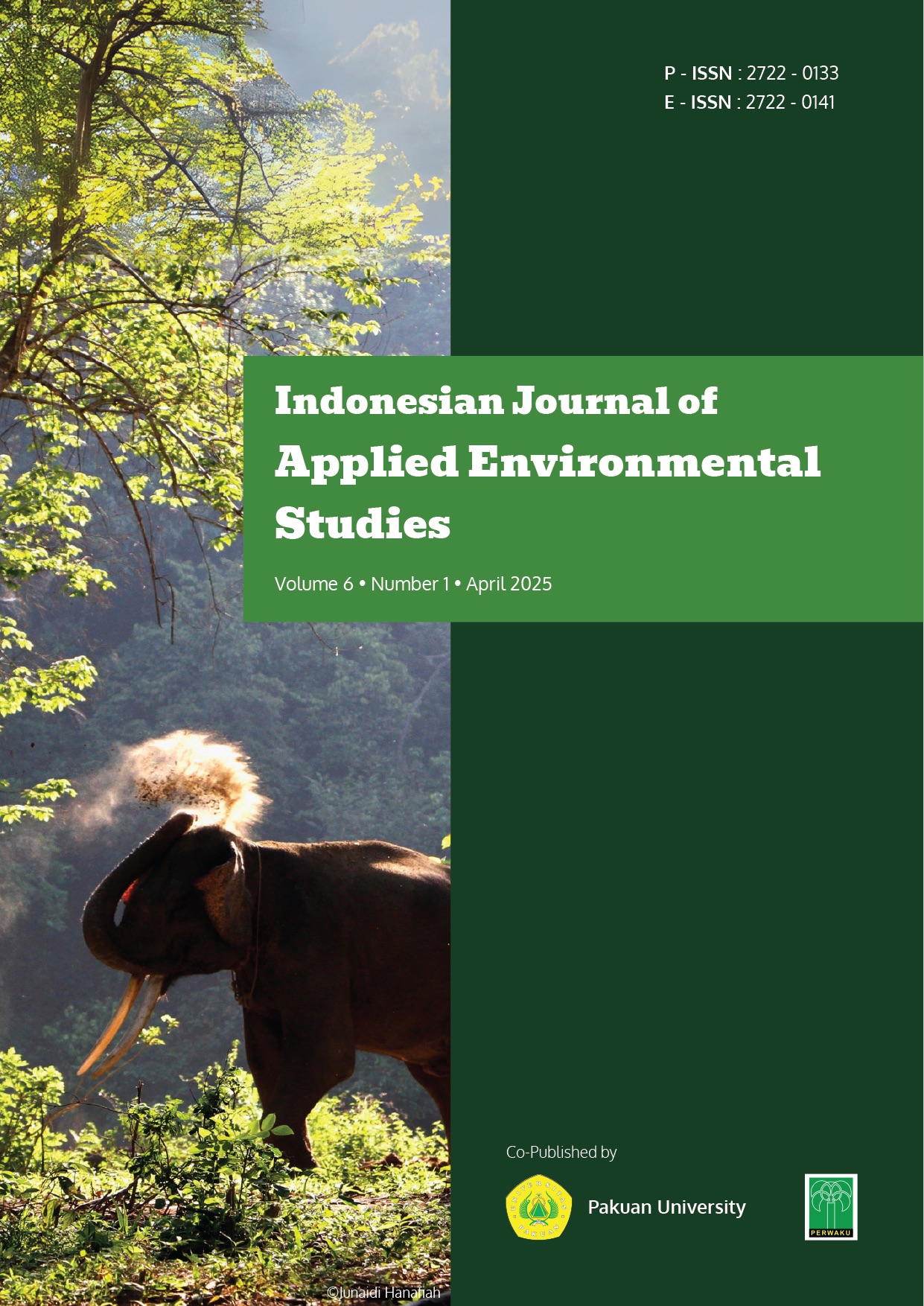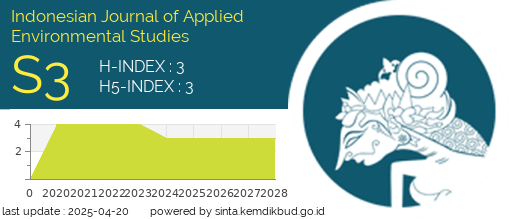Living with Leopard-Utopia or reality! Study on perception of local people towards coexistence with Leopard (Panthera pardus fusca) in and around the vicinity of the urban areas of Central India
DOI:
https://doi.org/10.33751/injast.v6i1.3Keywords:
Human-leopard interaction, Indore, Jabalpur, large carnivoresAbstract
Study on people’s perception towards human & leopard coexistence in urban landscape was conducted from April 2022 to March 2023 at Jabalpur and Indore, Madhya Pradesh. In total, 73 villages and 2,827 households were surveyed in the urban areas of Jabalpur, whereas 48 villages and 2,255 households were surveyed in the urban areas of Indore through a standard structured questionnaire. The present study revealed a higher frequency of reported leopard encounters in Indore as compared to Jabalpur. Despite similar concerns in both study areas about the threats posed by leopards and the need for conservation, significant differences were found in respondents’ willingness to learn about leopards and to coexist with them. Respondents in both Jabalpur and Indore predominantly attributed leopard presence to deforestation and forest land diversion. Despite their fear of living with large carnivores, a majority of participants indicated that they would not harm a leopard if encountered. Respondents from Indore reported higher satisfaction with the forest department's conservation efforts, possibly due to quicker compensation payments as compared to Jabalpur and also because they have exhibits (zoological park) of leopards and other wildlife for common people. During the survey, lack of awareness about conservation of leopard was observed in the periphery of urban landscape. Hence, running conservation awareness programmes with the help of NGOs and civil societies on human-leopard coexistence in both of these study areas may greatly help reduce hatred towards leopard in and around urban areas.
References
Athreya A., Pimpale, S., Borkar, A.S., Surve, N., Chakravarty, S., Ghosalkar, M., et al(2018). Monster or gods? Narratives of large cat worship in Western India. Cat New, 67:23-26.
Athreya, V. R., Thakur, S. S., Chaudhuri, S., & Belsare, A. V. (2007). Leopards in humandominated areas: a spillover from sustained translocations into nearby forests?. Journal-Bombay Natural History Society, 104(1): 45.
Athreya, V., Odden, M., Linnell, J. D., Krishnaswamy, J., & Karanth, U. (2013). Big cats in our backyards: persistence of large carnivores in a human dominated landscape in India. PloS one, 8(3): e57872.
Badola, R., Ahmed, T., Gill, A. K., Dobriyal, P., Das, G. C., Badola, S., & Hussain, S. A. (2021). An incentive-based mitigation strategy to encourage coexistence of large mammals and humans along the foothills of Indian Western Himalayas. Scientific Reports, 11(1): 5235.
Bailey TN (1993) The African leopard: ecology and behavior of a solitary felid. Columbia University Press, New York
Bailey, T.N., 1993. The African leopard. In The African leopard. Columbia University Press
Carter, N. H., & Linnell, J. D. (2016). Co-adaptation is key to coexisting with large carnivores. Trends in Ecology & Evolution, 31(8): 575-578.
Dhungana, R., Lamichhane, B. R., Savini, T., Dhakal, M., Poudel, B. S., & Karki, J. B. (2019). Livestock depredation by leopards around Chitwan national park, Nepal. Mammalian Biology, 96: 7-13.
Dickman, A. J. (2010). Complexities of conflict: the importance of considering social factors for effectively resolving human–wildlife conflict. Animal conservation, 13(5): 458-466.
Edgaonkar A, Chellam R (1998) A preliminary study on the ecology of the leopard (Panthera pardus fusca) in the Sanjay Gandhi National Park, Maharashtra. RR-98/002. Wildlife Institute of India, Dehra Dun, p 33
Gandiwa, E. (2012). Local knowledge and perceptions of animal population abundances by communities adjacent to the northern Gonarezhou National Park, Zimbabwe. Tropical Conservation Science, 5(3): 255-269.
Gebo, B., Takele, S., &Shibru, S. (2022). Perception and attitude of the local people toward carnivore population and conservation in the Faragosa‐Fura landscape of the Southern Rift Valley, Ethiopia. Conservation Science and Practice, 4(7): e12705.
Graham, K., Beckerman, A. P., &Thirgood, S. (2005). Human–predator–prey conflicts: ecological correlates, prey losses and patterns of management. Biological conservation, 122(2): 159-171.
Jhala, Y. V., Qureshi, Q., & Ghosh, P. (2016). Status of the leopard (Panthera pardus) in India. PlosOne, 11(7), e0159871. https://doi.org/10.1371/journal.pone.0159871
Khorozyan, I., Ghoddousi, A., Soofi, M., &Waltert, M. (2015). Big cats kill more livestock when wild prey reaches a minimum threshold. Biological Conservation, 192: 268- 275.
Krishnakumar, B. M., & Nagarajan, R. (2020). Living with Leopard Pantherapardusfusca (Mammalia: Carnivora: Felidae): livestock depredation and community perception in Kalakkad-Mundanthurai Tiger Reserve, southern Western Ghats. Journal of Threatened Taxa, 12(10):16210-16218.
Kshettry, A., Vaidyanathan, S., & Athreya, V. (2017). Leopard in a tea-cup: A study of leopard habitat-use and human-leopard interactions in north-eastern India. PLoS One, 12(5): e0177013.
Lenihan ML (1996). Public attitudes about wolves: a review of recent investigations. In: The Yellowstone Wolf—A Guide and Sourcebook. Mill Pond Press, Venice, FL, p. 354.
Lichtenfeld LL (2005) Our shared kingdom at risk: human–lion relationships in the 21st century. PhD Dissertation, Yale University, CT
Linnell, J. D., Swenson, J. E., & Anderson, R. (2001, November). Predators and people: conservation of large carnivores is possible at high human densities if management policy is favourable. In Animal conservation forum (Vol. 4, No. 4, pp. 345-349). Cambridge University Press.
Maclennan, S. D., Groom, R. J., Macdonald, D. W., & Frank, L. G. (2009). Evaluation of a compensation scheme to bring about pastoralist tolerance of lions. Biological Conservation, 142(11): 2419-2427.
Majumder, A., Suryan, T., Rizvi, T., Mani, R.M., Nag, S. ((2024). Assessment of the population and suitable habitat for a leopard (Panthera pardus) in the urban landscapes of Central India. European Journal of Wildlife Research, 70: 120. https://doi.org/10.1007/s10344-024-01871-7
Majumder, A., Suryan, T., Rizvi, T., Thakur, J., Tripathi, R.M. and Rokde, A. (2025). Dietary Resource Selection Pattern of Leopard (Panthera pardus) and its Conservation Implications in Urban Landscapes of Central India. Mammal Study, 50(3):1-11.
Merkebu, S., &Yazezew, D. (2021). Assessment of Human‐Wildlife Conflict and the Attitude of Local Communities to Wild Animal Conservation around BorenaSayint National Park, Ethiopia. International Journal of Ecology, 2021(1): 6619757.
Mijiddorj, T. N., Alexander, J. S., Samelius, G., Badola, R., Rawat, G. S., & Dutta, S. (2018). Corrigendum to: Livestock depredation by large carnivores in the South Gobi, Mongolia. Wildlife Research, 45(4): 381-381.
Mishra, C., Allen, P., McCarthy, T. O. M., Madhusudan, M. D., Bayarjargal, A., & Prins, H. H. (2003). The role of incentive programs in conserving the snow leopard. Conservation Biology, 17(6): 1512-1520.
Morehouse, A. T., Hughes, C., Manners, N., Bectell, J., & Bruder, T. (2020). Carnivores and communities: a case study of human-carnivore conflict mitigation in southwestern Alberta. Frontiers in Ecology and Evolution, 8, 2.
Mwakatobe, A., Nyahongo, J., &Røskaft, E. (2013). Livestock depredation by carnivores in the Serengeti ecosystem, Tanzania. Environment and Natural Resources Research, 3(4): 46.
Naha, D., Dash, S. K., Kupferman, C., Beasley, J. C., & Sathyakumar, S. (2021). Movement behavior of a solitary large carnivore within a hotspot of human-wildlife conflicts in India. Scientific Reports, 11(1): 3862.
Naughton-Treves, L., & Treves, A. (2005). Socio ecological factors shaping local support for Nestlerode, J. A., Engle, V. D., Bourgeois, P., Heitmuller, P. T., Macauley, J. M., &Allen, Y. C. (2009). An integrated approach to assess broad-scale condition of coastal wetlands—the Gulf of Mexico Coastal Wetlands pilot survey. Environmental monitoring and assessment, 150: 21-29.
Nichols JD, Thomas L, Conn PB (2009) Inferences about land bird abundance from count data: recent advances and future directions. In: Thomson DL, Cooch EG, Conroy MJ (eds) Modeling demographic processes in marked populations. Springer, New York, pp 201–235
Nyhus, P., & Tilson, R. (2004). Agroforestry, elephants, and tigers: balancing conservation theory and practice in human-dominated landscapes of Southeast Asia. Agriculture, ecosystems & environment, 104(1): 87-97.
Oli, M. K., Taylor, K. R., & Rogers, M. E. (1994). Snow leopard Panthera uncia predation of livestock: An assessment of local perceptions in the Annapurna Conservation Area, Nepal. Biological Conservation, 68: 63–68.
Pooley, S., Bhatia, S., & Vasava, A. (2021). Rethinking the study of human–wildlife coexistence. Conservation Biology, 35(3), 784-793.
Priatna, D. 2019. Konservasi Harimau di Bentang Alam Industri. In: A. Prijono, M. Kholis, & L.D. Bahaduri (eds.). AUM! Atlas Harimau Nusantara. Jakarta: KLHK-GEF UNDP. Pp. 162-167.
Priatna, D., Baruah. C., & Sharma, D. K. (2023). Better Management Practices (BMP) towards a Human-Wildlife Co-existence. Asian Journal of Conservation Biology, 12 (2): 177-178. https://doi.org/10.53562/ajcb.EN00024
Priatna, D., & Monk, K. A. (2022). The role of the academic community in combating wildlife trafficking. Indonesian Journal of Applied Environmental Studies, 3(2): 85-91. 10.33751/injast.v3i2.6302
Qureshi, Q., Jhala, Y. V., Yadav, S. P., Tiwari, V. R., Garawad, R., & Mallick, A. (2024). Status of Leopards in India, 2022. National Tiger Conservation Authority, Government of India, New Delhi, and Wildlife Institute of India, Dehradun.
Rani, M., Singh, S. K., Allen, M. L., Pandey, P., & Singh, R. (2024). Measuring people’s attitude towards conservation of Leopard Panthera pardus (Mammalia: Carnivora) in the foothills of Himalayan region. Journal of Threatened Taxa, 16(6): 25283-25298.
Rao, M., Rabinowitz, A., & Khaing, S. T. (2002). Status review of the protected‐area system in Myanmar, with recommendations for conservation planning. Conservation Biology, 16(2): 360-368.
Redpath, S. M., Young, J., Evely, A., Adams, W. M., Sutherland, W. J., Whitehouse, A., ... & Gutierrez, R. J. (2013). Understanding and managing conservation conflicts. Trends in ecology & evolution, 28(2):100-109.
Røskaft, E., Bjerke, T., Kaltenborn, B., Linnell, J. D., & Andersen, R. (2003). Patterns of self-reported fear towards large carnivores among the Norwegian public. Evolution and human behaviour, 24(3): 184-198.
Samantha, L. D., Tee, S. L., Kamarudin, N., Lechner, A. M., & Azhar, B. (2020). Assessing habitat requirements of Asian tapir in forestry landscapes: Implications for conservation. Global Ecology and Conservation, 23, e01137.
Sanderson, E. W., Redford, K. H., Vedder, A., Coppolillo, P. B., & Ward, S. E. (2002). A conceptual model for conservation planning based on landscape species requirements. Landscape and urban planning, 58(1): 41-56.
Teixeira, L., Tisovec‐Dufner, K. C., Marin, G. D. L., Marchini, S., Dorresteijn, I., & Pardini, R. (2021). Linking human and ecological components to understand human–wildlife conflicts across landscapes and species. Conservation Biology, 35(1): 285-296.
Treves, A., & Karanth, K. U. (2003). Human‐carnivore conflict and perspectives on carnivore management worldwide. Conservation biology, 17(6): 1491-1499.
Uduman, A., Hagerman, S., Kroc, E., Watson, A., Kittle, A., & Burton, A. C. (2022). Attitudes towards the Sri Lankan leopard Panthera pardus kotiya in two rural communities. Oryx, 56(4): 528-536.
Downloads
Published
How to Cite
Issue
Section
License
Copyright (c) 2025 Indonesian Journal of Applied Environmental Studies

This work is licensed under a Creative Commons Attribution-NonCommercial-ShareAlike 4.0 International License.


















